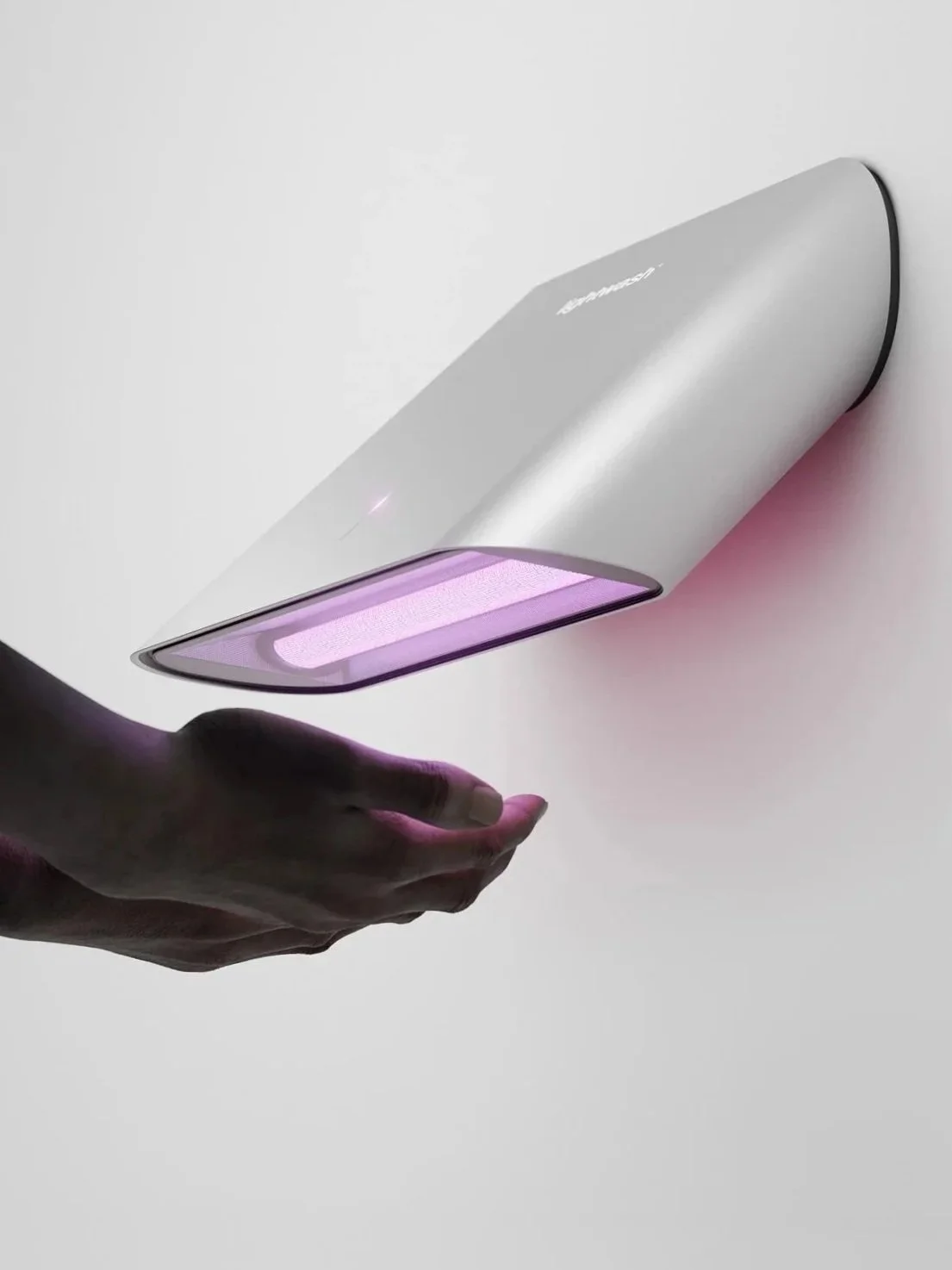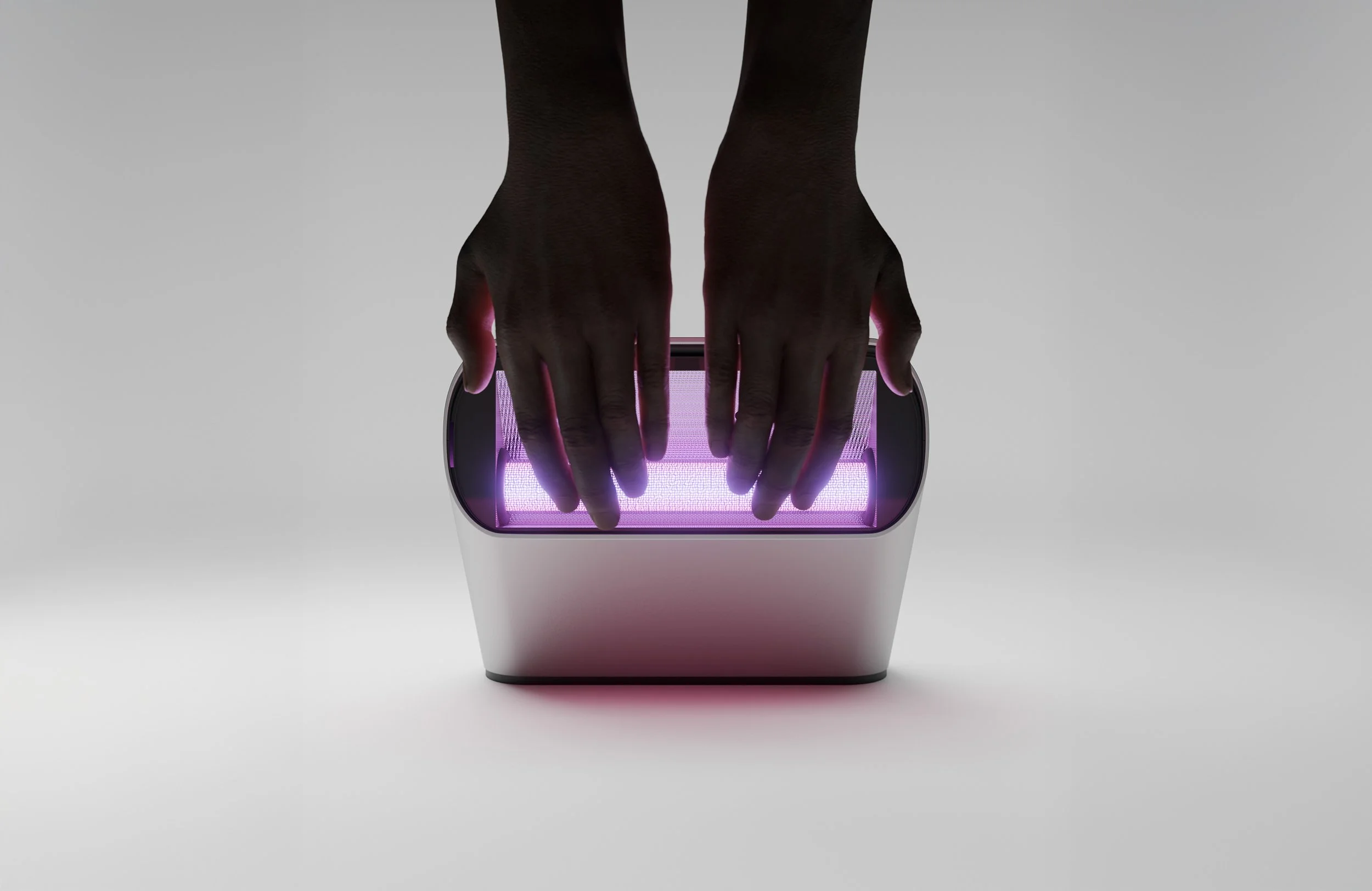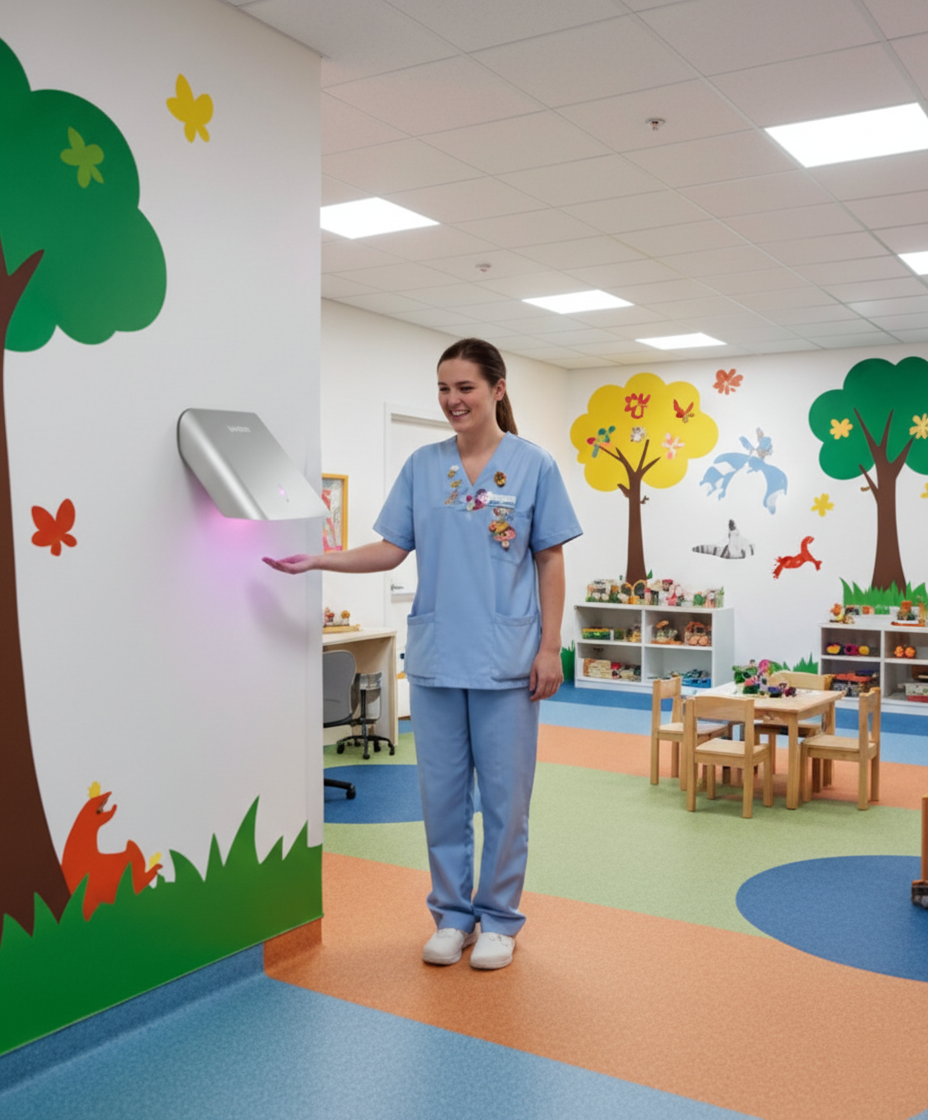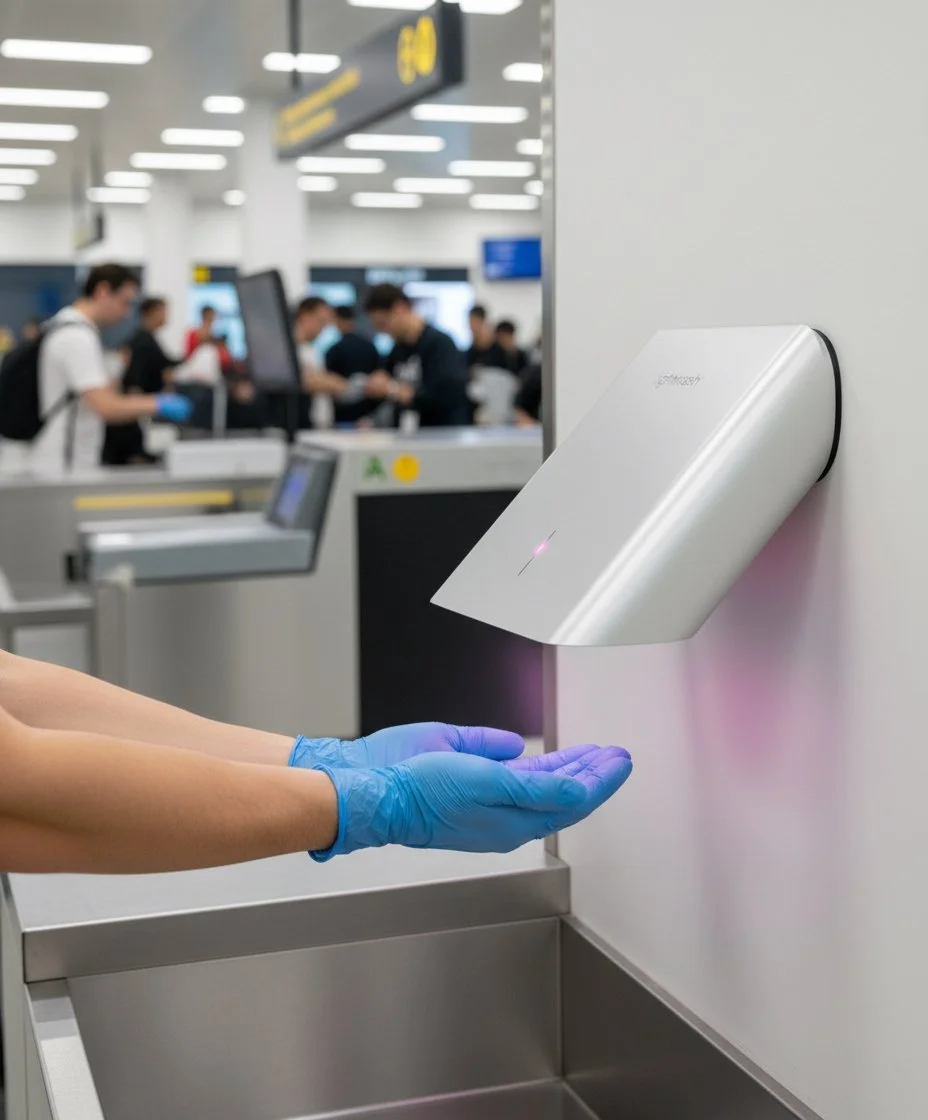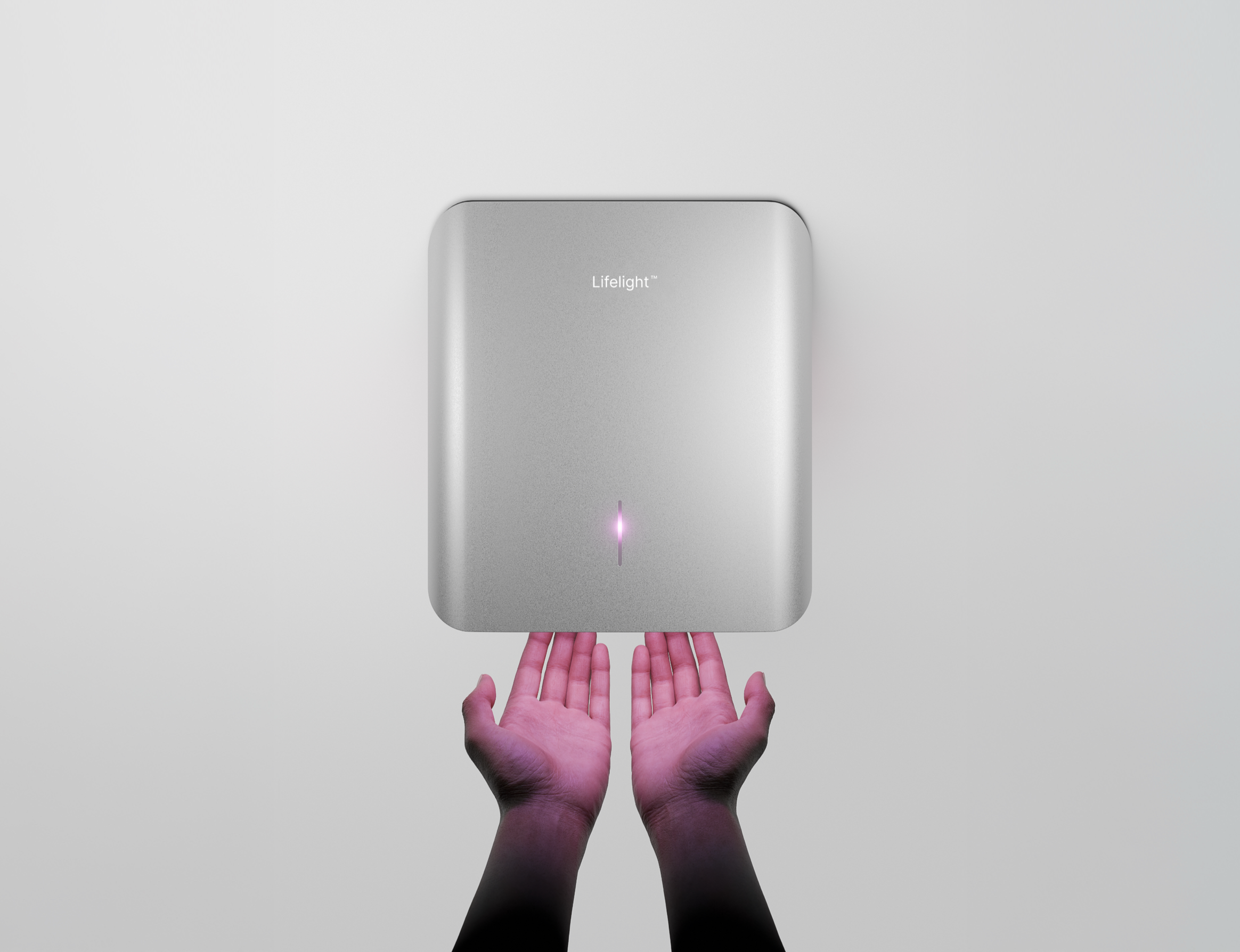
Lifelight is a next generation hand sanitization system that uses light to deliver safer, cleaner, and more sustainable protection for people and the planet.
Light that Protects Life.
Lifelight is the first hand sanitization system designed for the world we live in now. It replaces chemical gels and plastic bottles with safe, proven Far-UVC light. In just seconds, it neutralizes germs without residue, refills, or waste.
Always ready. Always touch-free.
Trusted in hospitals, hotels, and public spaces.
Good for people. Better for the planet.
Preventing the Preventable
Healthcare-associated infections (HAIs) are one of the most persistent threats in medicine and beyond. They claim lives, extend hospital stays, and cost billions each year in preventable expenses. At the heart of the problem is inconsistent hand hygiene: empty pumps, skipped sanitizer, and methods that are either unpleasant or unreliable.
Lifelight solves this problem with pure light — using a proven spectrum of Far-UVC to safely deactivate pathogens in seconds. Always ready, touch-free, and consistent, it eliminates the waste and unreliability of chemical gels, delivering sustainable, effortless protection that reduces HAIs while protecting both people and the planet.
-
In 2024, U.S. acute care hospitals saw millions of healthcare-associated infections, with approximately 72,000 lives lost, according to the CDC’s HAIs Reports & Data. This stark figure reveals that current hygiene interventions remain insufficient to protect patients and staff.
-
The estimated direct annual cost of treating healthcare-associated infections in the United States ranges from $28.4 to $45 billion, as reported in PLOS One (Gidey et al., 2023). This economic burden underscores the scale of inefficiency in current hygiene practices and the urgent need for more effective, sustainable solutions.
-
During the COVID-19 pandemic, the production, distribution, and disposal of hand sanitizers contributed an estimated 2% of the global carbon footprint, according to Environmental Science and Pollution Research (Duane et al., 2022). This impact highlights the hidden environmental cost of chemical-based hygiene practices and reinforces the need for sustainable alternatives like Lifelight.
Hygiene Without Harm
Protection for people, protection for the planet.
Lifelight delivers high-performance hand sanitization without chemicals, plastics, or waste. By replacing disposable gels and bottles with pure, proven light, it safeguards human health while reducing environmental impact.
-
Traditional gel sanitizers generate billions of single-use plastic bottles every year. Most end up in landfills or oceans. Lifelight requires no packaging at all — removing a major source of plastic waste from global hygiene.
-
Producing liquid sanitizers consumes clean water and chemical inputs at scale. Lifelight requires neither. It delivers protection in seconds, without straining resources or creating downstream pollution.
-
Traditional sanitizers demand constant production and distribution. Every refill means new bottles, new batches of chemicals, and more trucks on the road. Lifelight breaks this cycle with a system that never needs replenishment — dramatically reducing carbon impact.
The Data
What’s good for health shouldn’t harm the planet.
During COVID-19, global sanitizer use exploded — and so did its environmental cost. Each pump of alcohol-based gel required chemical production, global shipping, and disposable plastic packaging. The result: an estimated 2% of the world’s carbon footprint tied to sanitizer use alone.
Lifelight™ was designed to end that cycle.
By replacing chemistry with light, it removes the need for liquids, plastics, and refills entirely. The result is hygiene that’s faster, safer, and almost weightless for the planet.
Hand Hygiene Sustainability Comparison
Traditional Alcohol Gel/Liquid vs Lifelight™ — a light-based, chemical-free hand sanitation system.
| Metric | Traditional Alcohol Gel/Liquid | Lifelight™ |
|---|---|---|
| Primary environmental driver | Active alcohol production dominates total impact (≈ 69–83%).1 | Tiny, seconds-long electricity bursts — effectively negligible; device designed for a multi-year service life. |
| Annual CO₂e per dispenser Assumes 200 uses per day |
Ethanol ≈ 291 kg / year · Isopropanol ≈ 212 kg / year1 | Uses over 99% less carbon than alcohol-based sanitizers. |
| Tangible annual waste (per dispenser) |
≈ 2–4 mL per use → ≈ 146 L of product/year (≈ 150 × 1 L bottles + pumps & cartons). Large transport and storage footprint for liquid and packaging. |
Zero plastic bottles, zero refills. Designed for a multi-year service life. Eliminates liquid freight, storage, and packaging waste entirely. |
| Maintenance & service | Constant upkeep — checking levels, refilling, ordering supplies, and cleaning spills/residue. | Low-touch operation. No refills or chemical ordering; typical operating life ≈ 10,000 hours (years of service). |
| Fire / hazard risk | Flammable (Class I-B); storage and handling limits apply. | Non-flammable system; mercury-free UV technology — safe for people and the environment. |
| Operating expense profile | Ongoing spend on chemicals, packaging, shipping and storage. | Minimal electricity cost (pennies per year); designed for a multi-year service life. |
| Estimated cost per use | ≈ $0.15 USD / use (including packaging, handling, and refill labor) |
≈ $0.000002 USD / use (electricity only — virtually zero operating cost). Meaning: every time someone sanitizes their hands, Lifelight™ costs roughly 75,000× less to operate than an alcohol gel or liquid dispenser. |
- LCA evidence shows alcohol is the dominant impact in ABHS (≈ 69–83 % of total). Environmental Science & Pollution Research, 2022.
- Waste example: 2 mL × 200 uses/day × 365 ≈ 146 L / year per dispenser → ≈ 150 × 1 L bottles avoided annually with Lifelight™.
“This UVC hand sanitizer could radically change how we sterilize our hands ”
— Fast Company
Applications
Lifelight is designed for the places where hygiene matters most — and where traditional sanitizers fall short. From hospitals and clinics to airports, schools, hotels, and restaurants, it provides consistent, touch-free protection without the waste of bottles or refills. Scalable, sustainable, and effortless to use, Lifelight adapts across industries and environments, making reliable hand hygiene available wherever people gather, work, or travel.
Healthcare
In hospitals and clinics, Lifelight provides reliable protection at the points of care where consistency saves lives. Designed for staff, patients, and visitors alike, it delivers a touch-free hygiene experience that strengthens compliance and reduces the costly impact of HAIs.
Public Spaces
In airports, schools, and transport hubs, Lifelight scales hygiene where people move most. It operates without refills or plastic waste, ensuring protection is always available, always sustainable, and always trusted—even in the busiest environments.
Hospitality
In hotels, restaurants, and venues, Lifelight is a visible sign of care that builds guest confidence. It replaces messy gels with a seamless, premium experience—clean hands in seconds, with no residue and no waste—so safety never distracts from service.
Your Questions, Answered
How effective is Far-UVC light?
Far-UVC light has been shown in peer-reviewed studies to rapidly inactivate a wide range of pathogens, including coronaviruses, influenza, and drug-resistant bacteria such as MRSA. Research published by Columbia University and others demonstrates that Far-UVC at 222 nm can neutralize >99.9% of airborne and surface microbes within seconds of exposure.
Is Far-UVC safe for people?
Yes. Multiple independent studies confirm that Far-UVC (207–222 nm) does not penetrate the outer layer of the skin or the tear layer of the eyes. This makes it lethal to bacteria and viruses, but harmless to human tissue. Regulatory bodies, including the International Commission on Non-Ionizing Radiation Protection (ICNIRP), have established safety exposure limits that Lifelight operates well within.
How long does the lamp last?
Lifelight’s Far-UVC lamps are engineered for commercial durability, with an expected operational life of 8,000–10,000 hours. Because each sanitization cycle only requires a few seconds of exposure, this translates into hundreds of thousands of uses before replacement is needed. In a typical hospital or hospitality environment, that equates to many years of reliable service with virtually no maintenance.
The Future of Hand Hygiene Starts Here
Are you seeking to engage the next generation of hand sanitization? We’d love to connect. Whether you’re exploring pilots, looking for a sustainable alternative to traditional sanitizers, or simply curious to learn more, let’s start the conversation.

